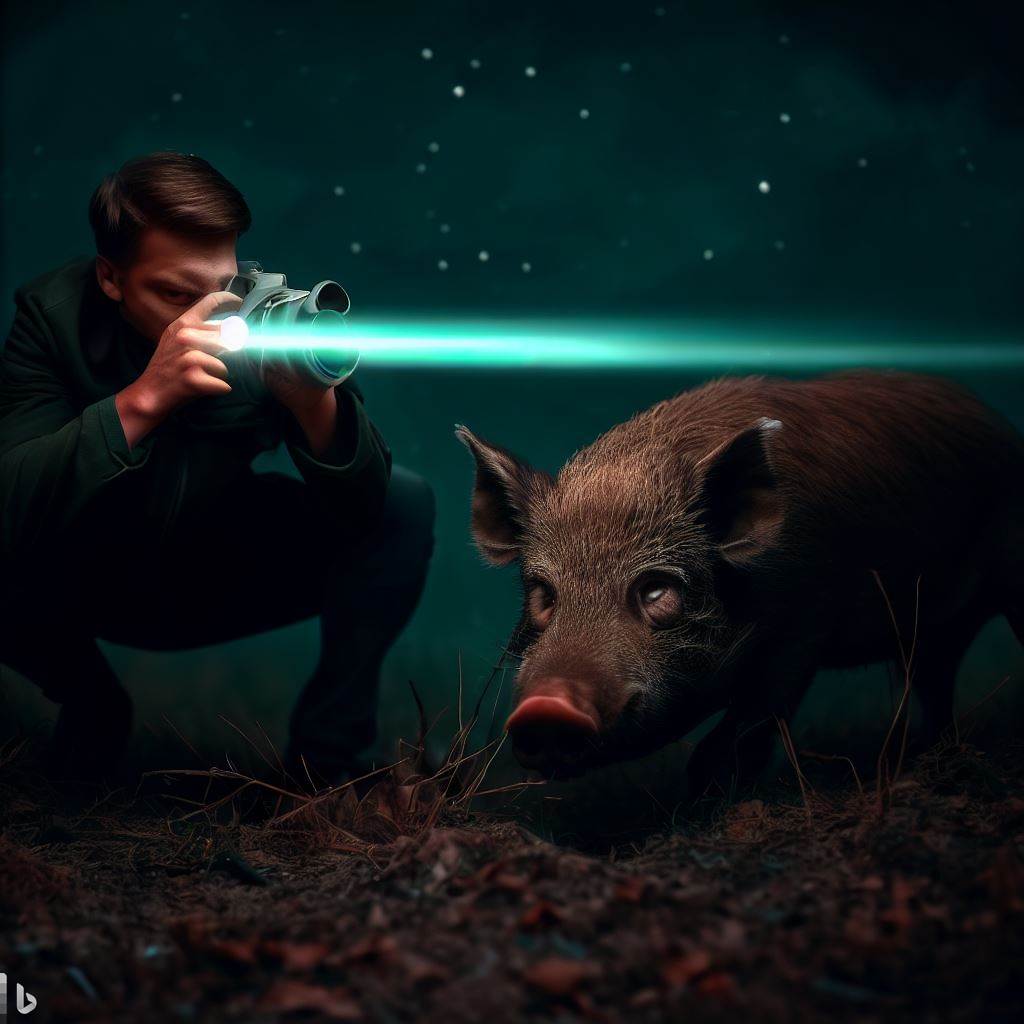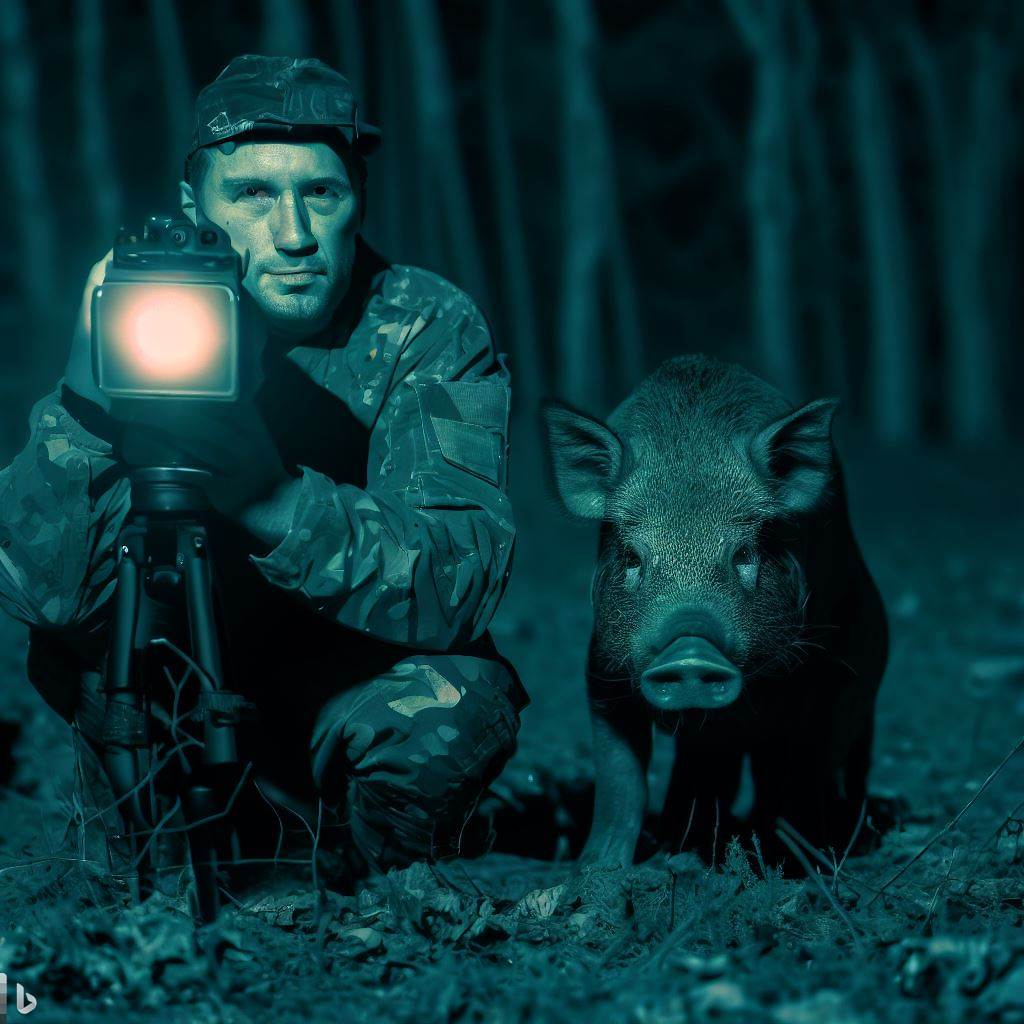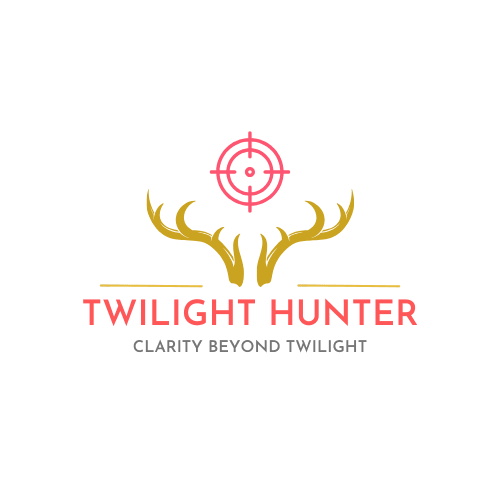

If you’ve ever found yourself wondering about the feasibility of using night vision for hunting hogs or wild boars, you’re not alone. With the increasing popularity of night vision technology, many hunters are curious about its effectiveness in tracking down these elusive creatures under the cover of darkness.
In this article, we will explore the potential benefits and limitations of using night vision for hunting hogs and wild boars, allowing you to make an informed decision about your next hunting expedition.
What Is Night Vision?
Night vision refers to the ability to see in low-light or dark conditions. It is a technology that allows individuals to perceive their surroundings when there is very little or no natural light available. By using specialized devices, such as night vision goggles or scopes, hunters can greatly enhance their visibility during night-time hunting expeditions.
These devices work by amplifying the existing light or by utilizing infrared technology to capture images that are not visible to the naked eye.
Definition Of Night Vision
Night vision is the capability to see in low-light or no-light conditions using specialized optical instruments or electronic devices. These devices work by collecting the tiny amounts of natural light available, such as moonlight or starlight, and enhancing it to create a visible image.
Night vision devices can be categorized into different generations based on the technology used and their performance capabilities.
Types Of Night Vision Devices
There are various types of night vision devices available for hunters to use when hog hunting. The most common ones include:
-
Night vision goggles: These are binocular-like devices that allow the user to see in the dark by amplifying the available light. They provide a stereoscopic view and are typically worn on the head using a strap.
-
Night vision scopes: These are similar to traditional rifle scopes but with the added ability to see in low-light or dark conditions. Night vision scopes can be mounted onto firearms, providing hunters with improved accuracy and visibility during nighttime hunts.
-
Night vision monoculars: These are single-eye devices that are held up to one eye and provide night vision capabilities. Monoculars are compact and lightweight, making them a popular choice for hunters who prefer a more portable option.
-
Night vision cameras: These devices allow hunters to capture images or video footage in low-light conditions. They can be used for documentation purposes or for scouting potential hunting areas before actually going out into the field.
Advantages Of Using Night Vision For Hog Hunting


Enhanced Visibility In Low-Light Conditions
One of the most obvious advantages of using night vision for hog hunting is the ability to see clearly in low-light or dark conditions. Hogs are known to be more active during the night, making it difficult for hunters to spot them without the aid of night vision devices.
With night vision, you can clearly see the hogs even when there is minimal natural light available, giving you an edge in tracking and targeting them.
Ability to See Hogs From a Distance
Night vision devices have the ability to amplify light, which means that hogs can be spotted from a greater distance compared to hunting during the daytime. This increased range of vision allows hunters to detect hogs that are further away and plan their approach accordingly.
It also minimizes the chances of startling or alerting the hogs, increasing the likelihood of a successful hunt.
Improved Accuracy
Night vision devices provide hunters with enhanced accuracy during nighttime hunts. The increased visibility and ability to clearly see the target allow for more precise aiming and shooting.
This is particularly important when hunting hogs, as they can be tough and resilient animals. A well-aimed shot is crucial to ensure a clean and ethical kill.
Increased Safety
Night vision technology also contributes to the safety of hog hunting at night. By being able to see clearly in the dark, hunters can avoid potential hazards such as uneven terrain, obstacles, or other hunters in the vicinity. This reduces the risk of accidents or injuries that may occur in low-light conditions.
Considerations Before Using Night Vision For Hog Hunting
Legal Regulations
Before using night vision devices for hog hunting, it is essential to familiarize yourself with the local laws and regulations regarding their use. Different states or jurisdictions may have specific restrictions or requirements for hunting hogs at night. Ensure that you adhere to all applicable regulations to avoid any legal consequences.
Additional Equipment Needed
Using night vision for hog hunting may require additional equipment to ensure optimal performance and a successful hunt. For instance, mounting a night vision scope on your firearm may require specific adapters or mounts. It is important to research and invest in the necessary equipment to ensure compatibility and effectiveness.
Training And Experience
While night vision devices can greatly enhance your hunting capabilities, they also require training and experience to use effectively. Familiarize yourself with the operation and controls of your chosen night vision device before heading out into the field.
Practice using it in different lighting conditions to become comfortable and proficient in its use. Additionally, consider seeking guidance or training from experienced night hunters to improve your skills and knowledge.
Cost Implications
Night vision technology can be quite expensive, and the cost of acquiring a high-quality night vision device should be taken into consideration. It is important to assess your budget and determine whether investing in night vision equipment aligns with your hunting goals and financial capabilities.
Consider researching different brands and models to find the best balance between price and performance.
Choosing the Right Night Vision Device
When it comes to selecting a night vision device for hog hunting, there are several factors to consider. These factors will play a significant role in determining the effectiveness and usability of the device for your specific hunting needs.
Generation Of Night Vision Technology
Night vision devices are categorized into different generations based on the technology they use. Generational advancements usually lead to improved performance, but they also come with a higher price tag. Determine the generation of night vision technology that suits your needs and budget.
Detection Dange
The detection range of a night vision device refers to how far it can detect and recognize objects in low-light conditions. Consider the typical distances at which you expect to hunt hogs and choose a device with a detection range that matches your requirements.
Field Of View
The field of view refers to the width of the scene you can see through the night vision device. A wider field of view allows for better situational awareness and increases the chances of spotting hogs in peripheral areas. Evaluate the field of view offered by different devices and choose one that provides optimal visibility for your hunting needs.
Image Quality
Image quality is a crucial factor in determining the effectiveness of a night vision device. Look for devices that provide clear and sharp images, with minimal distortion or graininess. Remember that the quality of the image will impact your ability to accurately identify hogs and make effective shots.
Battery Life
Night vision devices rely on batteries to operate, so it is important to consider their battery life. Opt for devices with longer battery life to minimize the risk of battery depletion during hunting trips. Additionally, consider the availability and ease of replacing batteries to ensure uninterrupted use.
Durability And Weather Resistance
Hunting can be physically demanding, and night vision devices are exposed to various environmental conditions. Look for devices that are built to withstand rugged usage and are weather-resistant. Ensure that the device is rated for the environmental conditions you expect to encounter during your hog hunts.
Best Practices For Hunting Hogs With Night Vision
Selecting The Hunting location
Choosing the right hunting location is essential for a successful hog hunt with night vision. Look for areas with a known hog population, such as agricultural fields, wooded areas, or water sources. Prioritize areas that offer good visibility and have a track record of hog activity during night hours.
Familiarize yourself with the property and obtain permission from landowners before conducting any hunting activities.
Understanding Hog Behavior
To increase your chances of a successful hog hunt, it is important to understand the behavior and habits of hogs. Hogs are most active during the night, but their patterns may change based on food availability and hunting pressure.
Learn about their feeding areas, travel routes, and bedding locations to strategically position yourself for an opportunity.
Safety Precautions
Safety should always be a top priority while hog hunting, especially at night. Ensure that you have a clear line of sight before taking a shot and be mindful of potential obstructions.
Practice proper firearm safety protocols, such as keeping your finger off the trigger until ready to shoot and treating every firearm as if it is loaded.
Use a reliable and durable flashlight to navigate safely in the dark and avoid tripping or stumbling.
Proper Setup And Calibration
Before heading out for a hog hunt with night vision, it is crucial to properly set up and calibrate your night vision device. Ensure that the device is securely mounted and properly aligned with your firearm, if applicable.
Take the time to adjust the brightness and contrast settings to improve image clarity. Follow the manufacturer’s instructions for set up and calibration to optimize the performance of your device.
Selecting the Right Ammunition
Choosing the right ammunition is vital to ensure an efficient and ethical kill when hunting hogs. Consider using ammunition specifically designed for hunting hogs, as they are often optimized to provide maximum stopping power and terminal performance. Consult local regulations to ensure you are using compliant ammunition.
Alternative Methods For Hunting hogs at Night
Thermal Imaging
Thermal imaging technology uses the heat signatures emitted by objects to create a visible image. Unlike traditional night vision that relies on ambient light, thermal imaging can detect objects even in complete darkness. Thermal scopes or thermal binoculars can be used for hog hunting at night, providing heat signatures and allowing hunters to identify hogs based on their body temperature.
Infrared Hunting Lights
Infrared hunting lights are another alternative for night hunting. These lights emit infrared radiation that is invisible to the human eye but can be detected by night vision devices. By using infrared lights in conjunction with night vision goggles or scopes, hunters can illuminate their surroundings without alerting hogs to their presence.
Suppressed Firearms
Suppressed firearms, or suppressors, can be used in conjunction with night vision devices for a stealthier hunting approach. Suppressors reduce the sound and muzzle flash produced when a firearm is discharged, making it less likely to startle nearby hogs. This combination allows for quieter and more covert hunting, increasing the chances of a successful hunt.
Trapping And Baiting Techniques
An alternative to actively hunting hogs at night is utilizing trapping and baiting techniques. Traps can be set up in strategic locations based on hog activity patterns and baited to attract hogs. By employing this method, hunters can passively capture hogs without the need for active hunting at night.
Tips For Success In Hog Hunting With Night Vision
Scouting And Pre-Hunt Preparation
Preparation is key to a successful hog hunt with night vision. Spend time scouting and familiarizing yourself with the hunting area during daylight hours. Look for signs of hog activity, such as tracks, wallows, or rooting areas. Set up trail cameras to monitor hog movement and identify high-traffic areas. By gathering as much information as possible beforehand, you can plan your night hunt more effectively.
Using Decoys And Calls
Decoys and calls can be effective tools for attracting hogs during night hunts. Decoys, such as lifelike hog replicas or motion-activated decoys, can lure hogs into your shooting range. Calls, such as hog grunts or distress calls, can also be used to imitate hog vocalizations and attract nearby hogs. Combine the use of decoys and calls with your night vision device for a more enticing and successful hunt.
Tracking Wounded Hogs
In the event that you have wounded a hog during the hunt, tracking it becomes crucial. Use your night vision device to locate the wounded hog and follow its blood trail. Take your time and exercise patience while tracking wounded hogs, as they can be unpredictable and dangerous when injured. Always prioritize safety and be prepared to take follow-up shots if necessary.
Team Hunting Vs. Solo Hunting
Decide whether you prefer hunting alone or with a team when using night vision for hog hunting. Solo hunting allows for stealthier movements and more personal control over the hunt. However, team hunting can provide valuable assistance, particularly when dealing with large or aggressive hogs. Communicate and coordinate effectively with your hunting partners to ensure a safe and successful hunt.
Safety Considerations For Night Hunting
Knowing Your Target And What’s Beyond?
One of the most important safety considerations during night hunting is knowing your target and what lies beyond it. Take your time to carefully identify your target and ensure that there are no unintended targets or individuals in the vicinity. Always be aware of the potential for ricochets or bullets traveling beyond your intended target and take precautions to prevent accidents.
Proper Firearm Handling
Maintaining proper firearm handling is crucial for the safety of yourself and others during night hunting. Practice good muzzle control and keep your finger off the trigger until ready to shoot. Treat every firearm as if it is loaded and never point it at anything you do not intend to shoot. Familiarize yourself with your firearm and ensure that it is in good working condition before heading out into the field.
Safety Equipment
Night hunting presents unique challenges, and having the appropriate safety equipment is essential. Use hearing protection to mitigate the risk of hearing damage from firearm discharge. Wear appropriate eye protection to protect your eyes from debris or fragments. Additionally, consider wearing reflective vests or using glow sticks to enhance your visibility to other hunters in the area.
Communication And Coordination
If hunting with a team, effective communication and coordination are essential for a safe and successful night hunt. Establish clear communication protocols, such as using hand signals or radios, to relay information and coordinate movements. Regularly check in with your hunting partners to stay informed about their locations and to ensure everyone’s safety.
Benefits Of Hog Hunting
Controlling Population And Preventing Damage
Hog hunting plays a vital role in controlling the population of feral hogs and preventing damage to agricultural lands and ecosystems. Feral hogs are highly adaptive and reproduce rapidly, resulting in overpopulation and destructive foraging behaviors.
By hunting hogs, hunters can help manage their numbers and mitigate the damage they cause to crops, native species, and the environment.
Utilizing The Meat
Hogs are a valuable source of lean meat, and many hunters choose to harvest and utilize the meat from their hunts. Hog meat can be processed into a variety of cuts and used in various culinary applications. Responsible hog hunting ensures that the meat is harvested ethically and sustainably, providing a source of quality meat for hunters or for donation to those in need.
Thrill And Challenge Of The Hunt
Hog hunting, especially at night with the use of night vision devices, offers hunters a thrilling and challenging experience. The darkness intensifies the hunt, testing hunters’ skills, patience, and adaptability. The thrill of stalking and successfully harvesting a hog under low-light conditions adds an extra element of excitement and satisfaction to the hunting experience.
Conclusion
Night vision for hog hunting can provide hunters with a significant advantage, enhancing visibility, accuracy, and safety during night-time hunting expeditions. By choosing the right night vision device, understanding hog behavior, and following best practices and safety precautions, hunters can increase their chances of a successful hunt.
Whether using night vision, alternative methods, or a combination of both, hog hunting at night offers unique opportunities and challenges to experience the thrill of the hunt while contributing to population control and utilizing the meat.
With proper preparation, equipment, and knowledge, hog hunting with night vision can be a rewarding and fulfilling outdoor pursuit.
The Ultimate Guide to the Top 5 Night Vision Binoculars for Hunting
Top 5 Night Vision Monoculars for Hunting in 2023 | Best Rating




